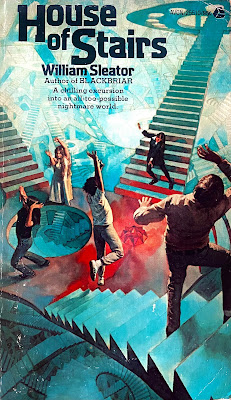Lots of married couples find it hard to live with each other. Some detest spending long periods of the day with their partner for life. Imagine going to work with your wife every day? Thankfully, Scott and Barbara Siegel aren't one of those couples. In fact, their marriage is so strong that it supported both of them living, loving, and working side-by-side. Beginning in the early 1980s, both Barbara and Scott Siegel authored books together under numerous franchises like G.I. Joe, Transformers, Dragonlance, Star Trek, and Dark Forces. The majority of their literary work is the young adult genre.For years I've hunted for a four-book series by the Siegels titled Fire Brats. It's an odd title, but a familiar scenario. Two Americans attempt to live and survive in the aftermath of a devastating nuclear bomb attack. The books were published between 1987-1988 by Archway, a subsidiary of Pocket Books. At the time of publishing, the paperback market was ripe with post-apocalyptic titles like The Survivalist, Deathlands, and Doomsday Warrior. I've never seen a copy of any of these books out in the wild. The books are scarce, which drives up the second-hand costs. I've seen these novels fetch up to $50 on Ebay. But, archive.org has the last three series installments available to read online.
Skipping a series debut is typically frowned upon in this household, but in this case it was necessary. Jumping into Survivors, the second installment, I quickly get the gist of the series. Matt (male) and Dani (female) are teenagers that grew up in the small town of Fair Oaks. From what I gather through the characters' brief reflections, the United States was nuked by an unknown country and now its major cities and metropolis areas are piles of rubble. Dani and Matt were able to seek shelter underground, and as Survivors begin, they emerge four days later on a journey west. Apparently Dani's parents were killed, but Matt's family may still be alive in California, thus the series will follow their trek through the wastelands.
The two characters spend a night in an abandoned Burger King (in what may be Colorado), and then attempt to cross a large river on a homemade raft. The raft disintegrates and the two are briefly thrust into the raging river to become separated. Eventually, the two reunite and journey into the wilderness and find a cabin that is fully stocked with weeks of food. The place even has running water, farm animals, books, and a fireplace. This is paradise for Matt and Dani, so they decide to stay for a while.
The cabin's owner is an old man named Ordway, who surprises the kids with a pointed shotgun. He has dealt with a lot of bad guys since the bombs fell, so he immediately thinks these teens are out to rob and murder him. After marching the duo outside for an execution, Matt is able to fight the old guy. As a result, the kids wrestle his gun away and Ordway breaks a leg. After explaining they mean no harm, and that they thought the cabin was abandoned, Ordway loosens up and makes a deal with the kids. He'll train them on what they will need to know to survive in this new world. They will help him around the house for a few weeks until his leg heals.
At 155 pages, Survivors mostly spends the bulk of the book on the two kids interacting with Ordway to learn how to make weapons, hunt, and what to eat in the forest (who knew you could eat tree bark?). The book's last 50ish pages introduces a small band of mean scavengers looking to capture/rape Dani and claim the house. The finale has the kids using slingshots and bows to defend the cabin while Ordway attempts to fend off the attackers with a broken shotgun.
Despite being juvenile fiction, I found Survivors to be a lot of fun. It reminded me of the first Survivalist novel with the prepping techniques and education, but the quest and action is reminiscent of Survival 2000. Dani, Matt, and Ordway possess endearing qualities that make them lovable. The introduction of the bad guys was inevitable, and the final fight and pursuit was engaging and well-written. While the book lagged a little in the middle, it was a good intermission to prepare for a rowdy end.
I look forward to reading the rest of the series and I'm grateful that someone took the opportunity to scan most of the books. They are long out of print and very few libraries or book stores carry them in their current catalogs. If you love the 1980s post-apocalyptic stuff, then Fire Brats is sure to please. In a similar fashion, you might also enjoy the dystopian 1980s series U.S.S.A., which seems to be equally hard to find and expensive. Archive.org has at least one of the series' three books.
Buy a copy of this book HERE




















